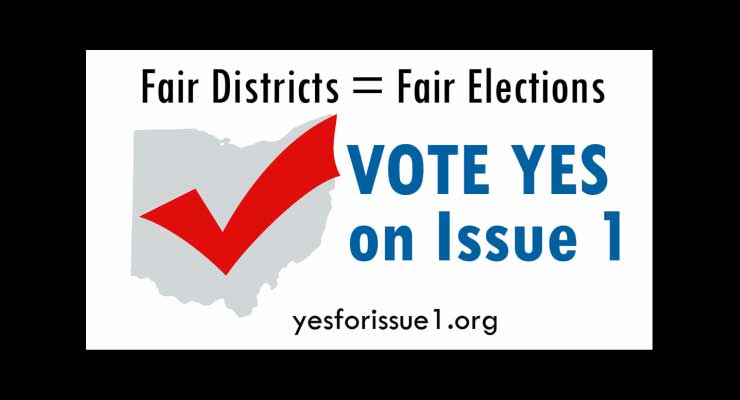
Voter approved bipartisan Ohio redistricting commission has chance to save state’s election system | Democracy, elections and voting at Democracy Chronicles
From the Brennan Center and written by Michael Li and Eric Petry:
The three-decade history of failed efforts to tackle gerrymandering in Ohio ended Tuesday when voters overwhelmingly approved Issue 1, a constitutional amendment to create a bipartisan redistricting commission to draw legislative districts starting in 2021.
The new commission will fundamentally reshape how district lines are drawn for the state House and Senate. Although the amendment does not cover congressional redistricting, two state senators have proposed a plan to expand the commission’s authority to include congressional lines.
The amendment changes Ohio’s redistricting in several ways:
Expansion of the Commission:
Until now, redistricting was in the hands of a five-member Apportionment Board consisting of the governor, secretary of state, auditor of state, and two members representing the two main parties in the legislature. Not only did this mean the Board consisted entirely of elected officials, but it meant that a major party could be represented by as few as one member, as happened to Democrats in 2011.
With the passage of Issue 1, the commission will expand from five to seven members, with each majority and minority leader in the legislature appointing a commissioner. This larger commission will not only guarantee at least two seats to the minority party, but its expanded size will make it easier to more fully reflect the state’s demographic and geographic diversity. And for the first time ever, everyday citizens, and not just officeholders, could be part of the commission.
Tougher Rules:
Mapdrawing in 2021 will be governed by a much tougher set of rules than in 2011.
Historically, rules governing redistricting in Ohio were vague and left significant discretion in the hands of elected officials, who, regardless of party, routinely took advantage of the situation to manipulate lines to favor incumbents or maximize partisan gain. Not surprisingly, Ohio’s maps have been ranked as among the most gerrymandered in the nation.
New rules for the commission will curb the worst redistricting abuses. Mapdrawers must adhere to an express and judicially enforceable provision prohibiting partisan gerrymandering. The commission is also required to try to draw districts so the number of seats each party is likely to win mirrors its share of the statewide vote. The adoption of similar objective rules in Florida was critical in enabling courts this year for the first time to strike down maps drawn for partisan reasons.
Tying seats to each party’s statewide vote share could also act as a catalyst for voter engagement and participation since parties will have an incentive to turn out as many voters as possible.
Incentives for Bipartisan Map Approval:
The amendment also encourages, if not requires, bipartisanship in mapdrawing.
In the past, the majority party on the Apportionment Board was able to railroad district maps to approval without support from the minority party. There was no incentive to compromise since one party could control the redistricting process with nothing more than a simple majority.
The new system is designed to remove majority party dominance. For a map to be valid for the whole decade, it must win the approval of at least two members of each party. A map can still be approved by the commission without minority support, but it would remain in effect for only four years before having to be redrawn. This approval mechanism uses the uncertainty of electoral politics to foster compromise. In theory, it should motivate the majority to work with the minority to pass a permanent map because there is no guarantee the majority party will be in power four years in the future. Although this process does not go as far as California’s commission in requiring minority approval for any map, it provides an incentive that was wholly absent in the old system.
After the failures of ballot initiatives to create redistricting commissions in 1981, 2005, and2012, many thought Ohio redistricting reform was impossible. But unlike those previous attempts, lawmakers and reformers were able to come together and craft a plan that not only won support of both parties, but of groups as diverse as the NAACP and Ohio Chamber of Commerce. As efforts move forward to reform redistricting in states like Illinois, perhaps Ohio will be a model and a beacon.
Leave a Reply